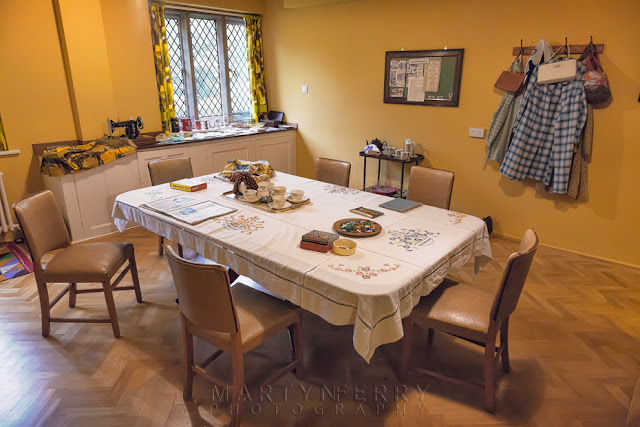Following on from my tour around the gardens at the National
Trust property of Anglesey Abbey in Cambridgeshire, here we have a look at the
impressive house itself and the accompanying Rose Garden.
Once a medieval Augustinian priory, then an Elizabethan
manor house, Anglesey Abbey was restored in the early 20th century by Lord
Fairhaven to create a richly decorated showcase for his eccentric collection of
fine art. The house retains parts of the original medieval buildings and
Elizabethan decoration.
| Looking across the Rose Garden to the lower level buildings. |
Despite the name, Anglesey was never an abbey, but a priory. The earliest written records available are of a monastic settlement in 1212, when Richard de Clare, Earl of Gloucester, gave half the income of Bottisham to the canons of Anglesey.
| It was a bit of an overcast day, but the house was still very photogenic. |
The priory was never terribly rich, and thus it was among the first monastic houses to be suppressed by Henry VIII in 1536. Most of the monastic buildings were pulled down within a few years, but in 1591 the Fowkes family purchased Anglesey and built an Elizabethan manor house within the ruins.
| A little stone sundial in the front garden. |
In the early 17th century the property was purchased by
Thomas Hobson, a successful carrier from Cambridge whose habit of offering the
first available horse to his clients gave rise to the phrase, 'Hobson's Choice'
(that is, no choice at all).
During the 19th century the house was enlarged, and expanded
again in the early 20th century by Lord Fairhaven.
| Another view of the Rose Garden. |
 |
| The 'Biggin Door' |
This door was made for Henry Cromwell, the fourth son of Oliver Cromwell, while he lived at Biggin House, it was then removed to Ramsey Abbey in 1757 and finally given to Lord Fairhaven in August 1935.
| The side of the house and main entrance. |
I tried to get a few shots of the inside of the house, but because most of the rooms are kept dimly lit, with curtains closed, so as to keep the interiors preserved, it was pretty tricky.
| The Library. |
The Library houses Lord Fairhaven's collection of rare
books, but the bookshelves are just as interesting as what they hold; the
shelves were made from elm timbers rescued from the foundation piles of
Waterloo Bridge when the bridge was destroyed in 1934.
 |
| One of the kitchens, laid out a decidedly retro style. |
 |
| A family dining room for those informal occasions, which reminds me of those old 1950's ads for kitchens. |
And that's about it for Anglesey Abbey, well worth an afternoon of anyone's time. Next up, is a trip to the very beautiful Oxburgh Hall in Norfolk.
No comments:
Post a Comment